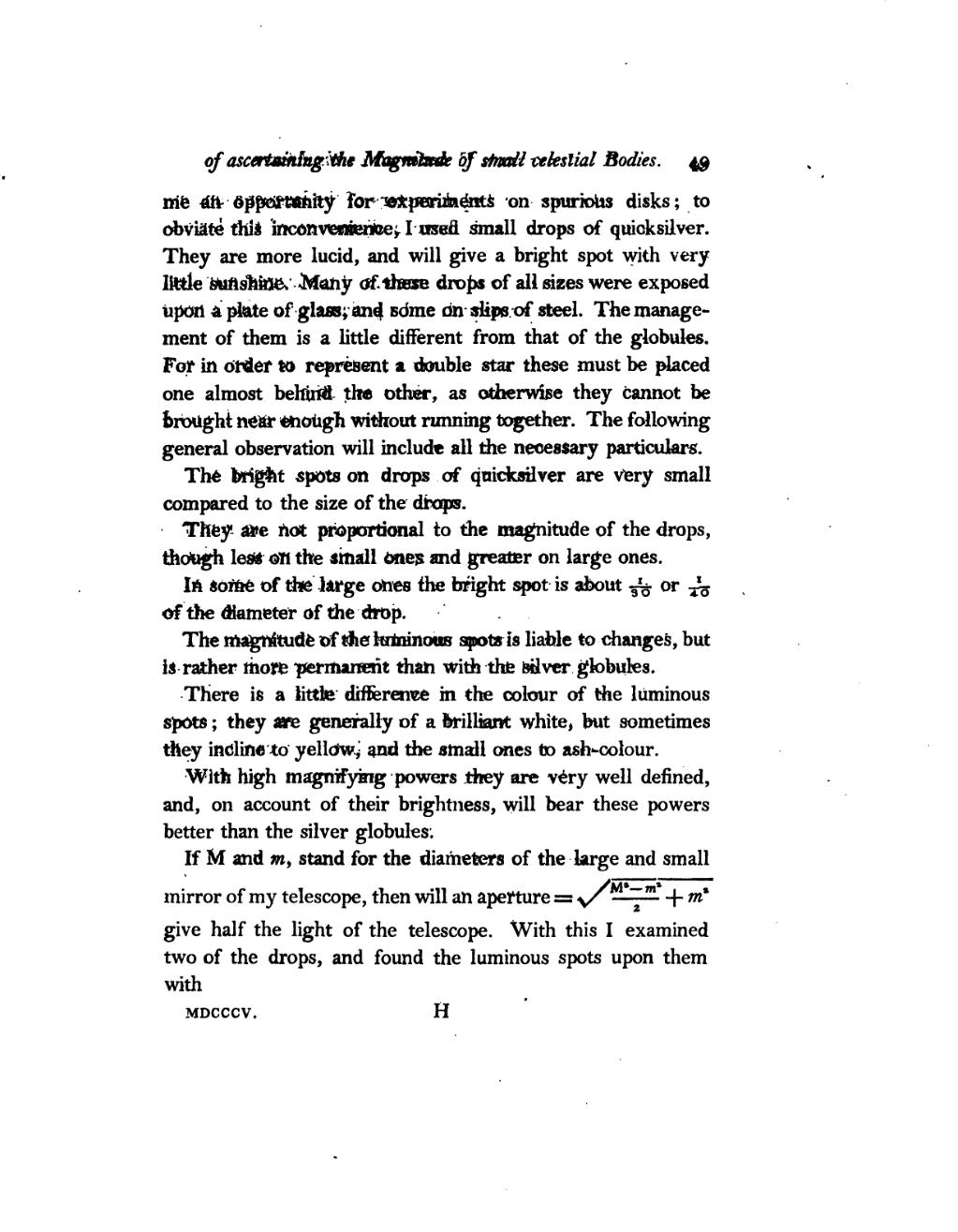me an opportunity for experiments on spurious disks; to obviate this inconvenience, I used small drops of quicksilver. They are more lucid, and will give a bright spot with very little sunshine. Many of these drops of all sizes were exposed upon a plate of glass, and some on slips of steel. The management of them is a little different from that of the globules. For in order to represent a double star these must placed one almost behind the other, as otherwise they cannot be brought near enough without running together. The following general observation will include all the necessary particulars.
The bright spots on drops of quicksilver are very small compared to the size of the drops.
They are not proportional to the magnitude of the drops, though less on the small ones and greater on large ones.
In Some of the large ones the bright spot is about 130 or 140 of the diameter of die drop.
The magnitude of the luminous spots is liable to changes, but is rather more permanent than with the silver globules.
There is a little difference in the colour of the luminous spots; they aee generally of a brilliant white, but sometimes they incline to yellow, and the small ones to ash-colour.
With high magnifying powers they are very well defined, and, on account of their brightness, will bear these powers better than the silver globules.
If M and m, stand for the diameters of the large and small mirror of my telescope, then will an aperture give half the light of the telescope. With this I examined two of the drops, and found the luminous spots upon them with

